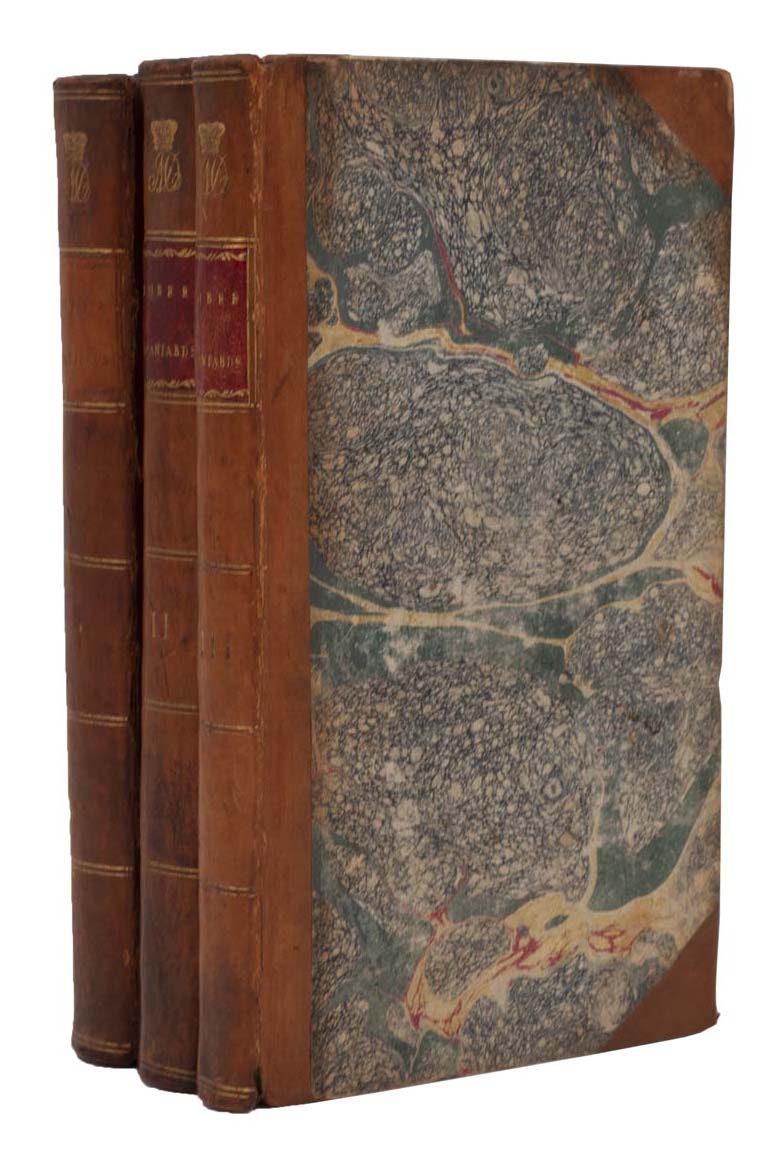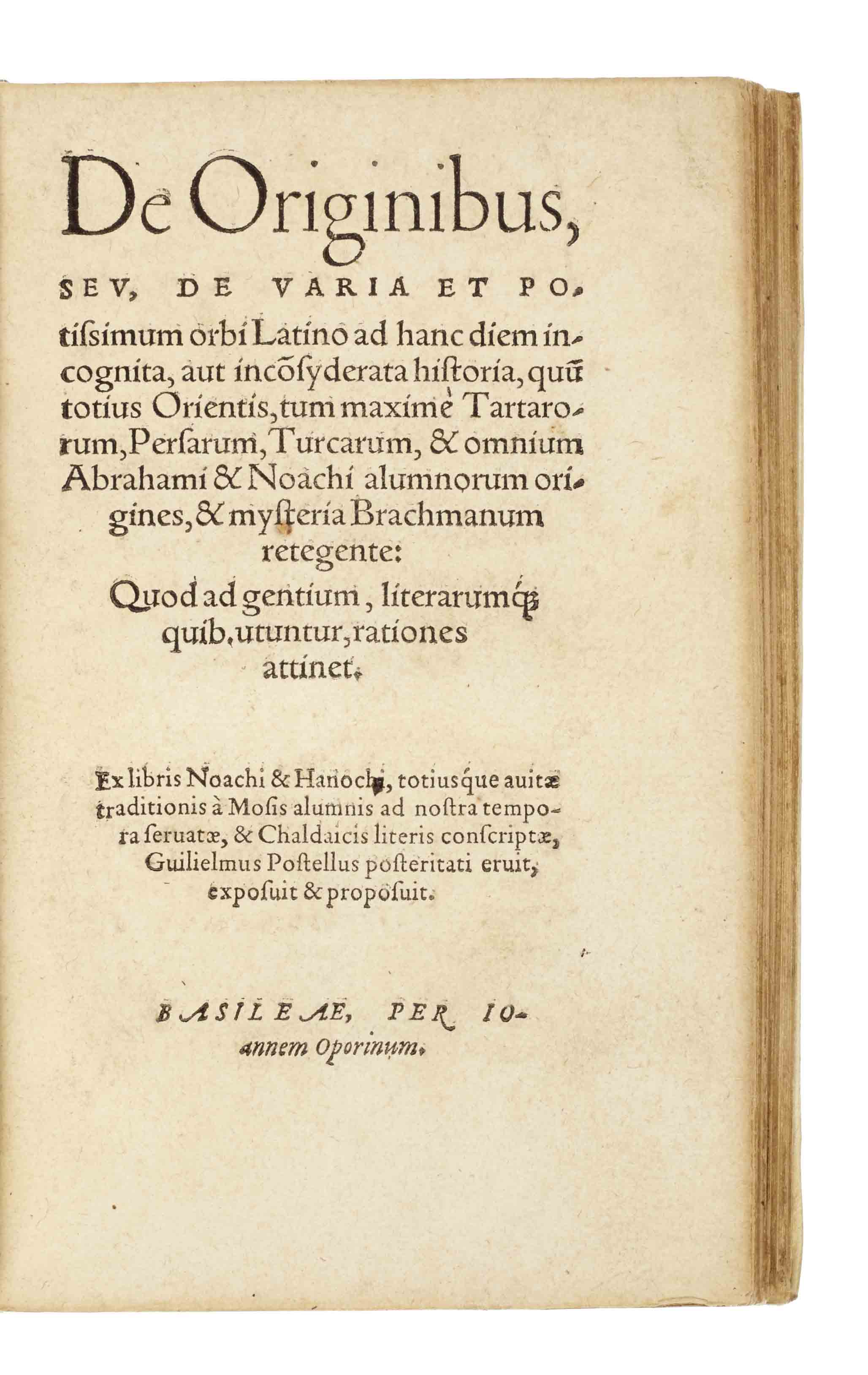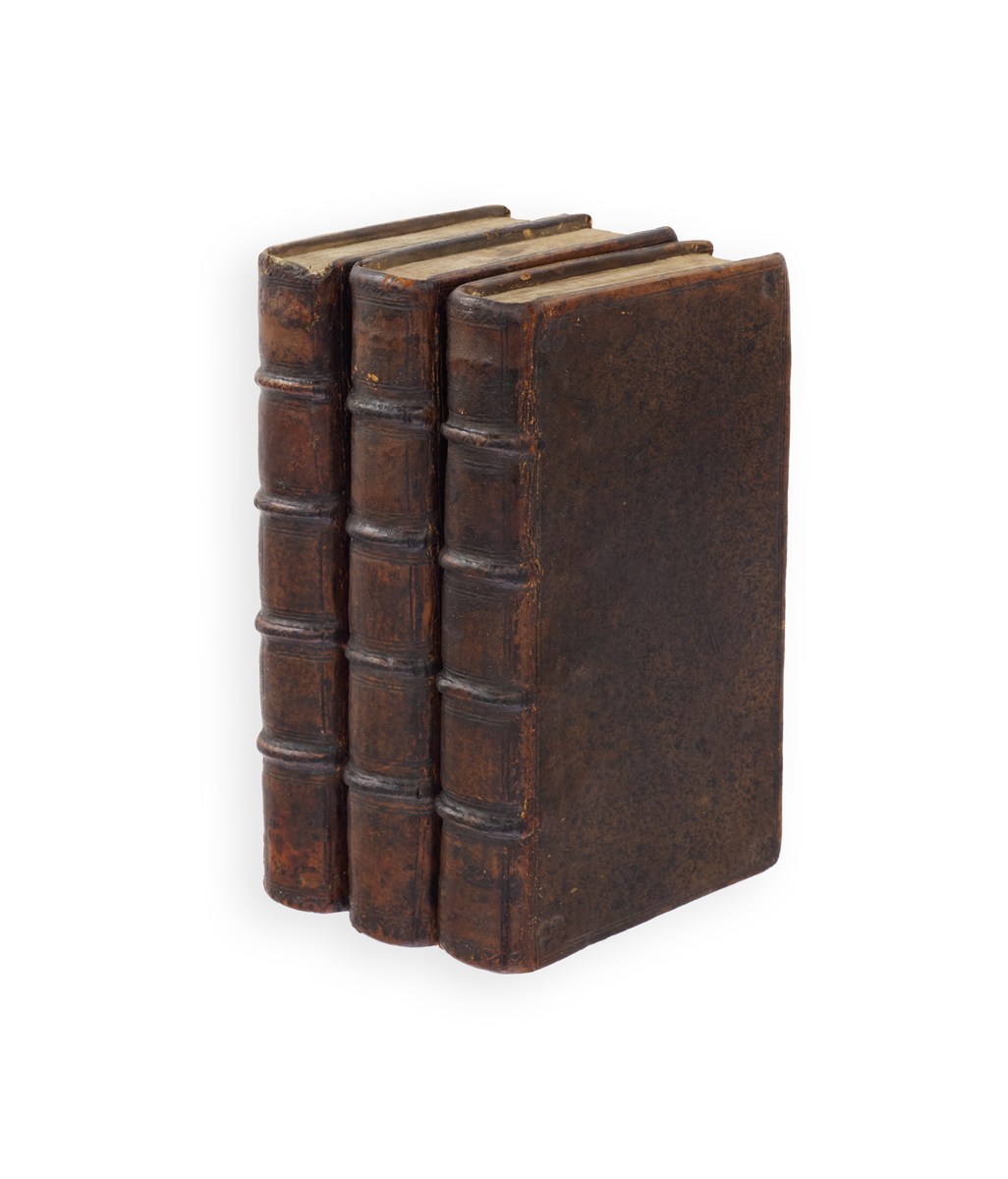
A ‘SUPER SHOCKER' BY A BOOKSELLER
WALKER, George.
The three Spaniards, a Romance …
London: Printed by Sampson Low; for G. Walker ...; and Hurst ... 1800.
Three vols, 12mo, pp. [4], 295, [1, ads]; [2], 262, [2, ads]; [2], 250; a very good copy in contemporary half calf, lightly rubbed, one label missing; Downshire monogram to spines.
First edition, very rare; the very brief Preface sets the popular tone: ‘In compliance with the present taste in literary amusement, this work is presented to the Public.’
Walker (1772-1847) was a London bookseller (latterly in Golden Square) and author of ten or eleven novels, the best known of which is The Vagabond, a clever and amusing burlesque on the ‘new philosophy’ of William Godwin, Mary Wollstonecraft, et al. As a distributor of all sorts of fiction, Walker was able to adjust the types of novel he wrote according to contemporary literary demands. Aside from Gothic fiction, novels of radical ideas and the Tractarian fiction of the so-called polemical school of Godwin, Bage and Holcroft were in high demand: ‘Social horrors and the terrifying climate of adversary political ideas were frequently presented to readers by way of Gothic paraphernalia and symbols in these novels’ (Frank).
‘Squarely in the Gothic vein … [The Three Spaniards] demonstrates his versatility in pleasing the trends and tastes of Gothic fashion. This book is a super-shocker and is arguably the most highly Gothic of Walker's many romances ...; his objective is to horrify, startle, disgust, and amuse Monk Lewis’s own audience with a book calculated to out-Monk The Monk ... The Three Spaniards is an almost unrivalled example of the violent, hate-driven sado-eroticism of the high Gothic at its highest peak. Lewis’s The Monk, W. H. Ireland’s The Abbess of 1799 and Walker’s The Three Spaniards of 1800 constitute a triangle of noxious horror within the Gothic tradition at large’ (ibid.) On the other hand, Summers, in The Gothic Quest, thought it ‘extremely well written and interestingly told … avoiding extravagance.’
Provenance: from the library of Mary Hill (née Sandys, 1764–1836), Marchioness of Downshire, later Baroness Sandys. Lady Downshire was a wealthy heiress, society hostess, and literary patron who married the young but ill-fortuned politician Arthur Hill in 1786. Raised by her uncle, one of Samuel Johnson’s ‘Streatham worthies’, she became a friend of both the Prince of Wales and Mrs Fitzherbert, and once entertained the Prince for four days at the family seat of Ombersley. She built up a fine collection of contemporary fiction, mostly by women, to add to the family library.
Not in the British Library. ESTC records four copies only, at Bodley, Huntington, Texas, and the University of Sydney.
Garside, Raven and Schowerling 1800:76; Frank, The first Gothics 464.

